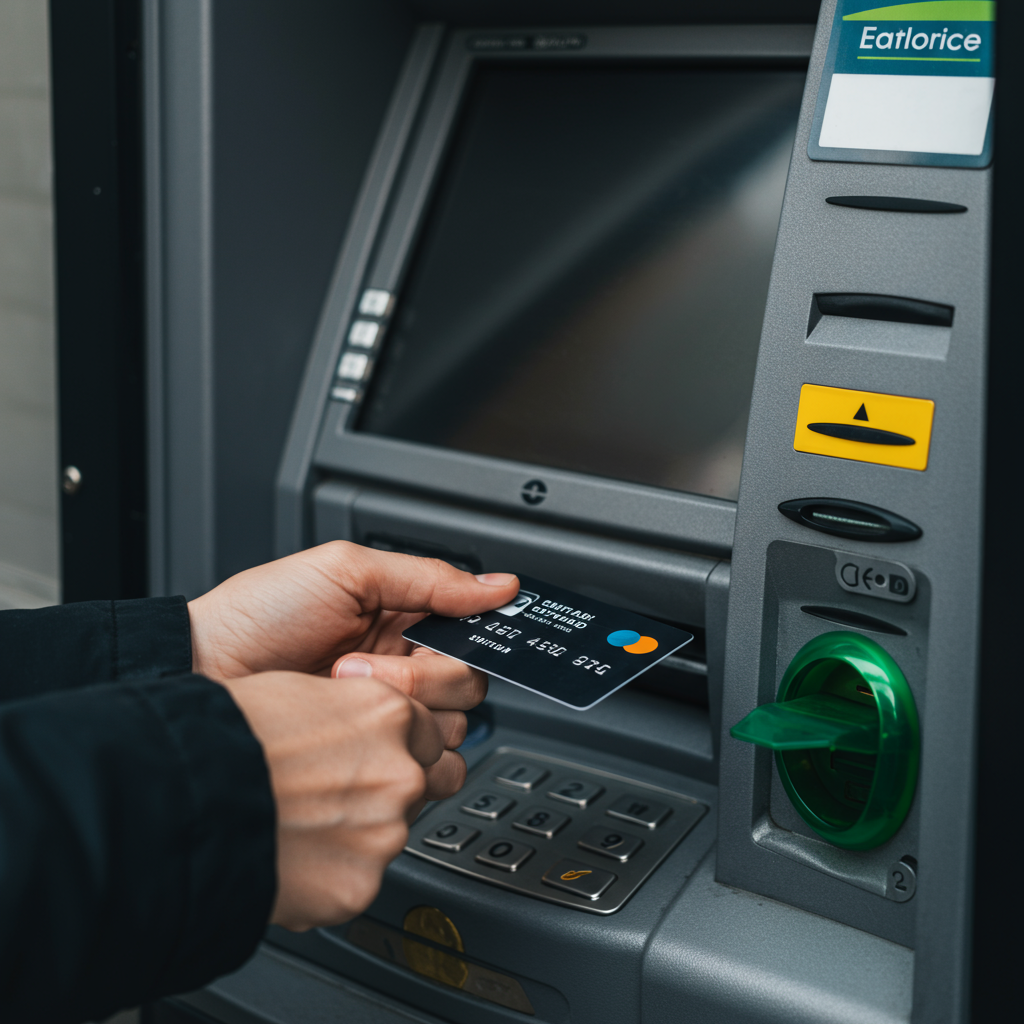
Table of Contents
Introduction
Imagine having a financial tool at your fingertips that allows quick, easy access to your money for everyday needs – from paying bills to buying groceries. A checking account is exactly that essential tool, enabling you to manage your cash flow seamlessly and keeping your funds readily available when you need them most. Whether you’re an investor managing your portfolio or just trying to stay on top of daily expenses, understanding what a checking account is can set the foundation for smarter money management.
In today’s fast-paced world, the importance of a checking account cannot be overstated. It is the primary gateway to your money, serving as the hub for transactions such as direct deposits, withdrawals, and online payments. According to recent financial habits surveys, millions of people rely on checking accounts to handle their everyday finances efficiently. This accessibility and convenience make checking accounts indispensable for handling money responsibly before one even starts to think about investing. For investors, maintaining liquidity through a checking account ensures that funds are not only safe but also immediately accessible for opportunities or emergencies.
Checking accounts also play a crucial role in financial organization and planning. They help individuals maintain a clear record of transactions, which is vital for budgeting and tracking expenses. If you’re new to managing your finances, understanding the ins and outs of a checking account is a critical first step. With features like online banking and mobile apps, most checking accounts offer a level of control and monitoring that can protect you from overdrafts and unauthorized charges, giving you peace of mind and confidence in your spending habits.
For those interested in investing, a checking account acts as a cash reservoir — a place where you hold your liquid assets before transferring funds into investment accounts. This makes it a fundamental aspect of one’s financial infrastructure, ensuring you have ready cash for both everyday needs and investing decisions. Before diving into specifics, it’s important to understand what a checking account is and why it’s considered a cornerstone of personal finance.
What You’ll Learn in This Guide
In this comprehensive guide, we’ll walk you through everything you need to know about checking accounts. Here’s what we’ll cover:
- Understanding the Basics: We’ll break down the fundamental concepts of a checking account, including its definition and why it’s important for managing everyday finances effectively.
- Key Features and Benefits: Learn about the common features like debit card access, online banking, and security measures that make checking accounts both convenient and safe.
- Types of Checking Accounts: Discover the different kinds of checking accounts available for personal use, students, seniors, and businesses, along with their unique benefits.
- How to Open and Manage Your Account: Get a step-by-step overview of the account opening process, required documentation, and tips for avoiding common fees and maximizing benefits.
As we proceed, we’ll explore the various details about checking accounts, including their types, the fees you might encounter, and how to choose the right account for your needs. We’ll also cover practical advice on when to contact your bank for assistance and how to handle common banking challenges. This knowledge will empower you to take control of your finances confidently and make informed decisions tailored to your lifestyle.
By the end of this guide, you’ll be well-equipped with the understanding needed to use a checking account as a powerful financial tool — whether you’re managing household finances or preparing to engage in investing activities. Let’s embark on this journey towards smarter money management that lays the groundwork for financial success.
Get ready to take the mystery out of banking basics and discover how a checking account can become your everyday financial ally. Understanding this essential tool is a crucial step toward financial empowerment and peace of mind.

Building on the basic understanding of checking accounts introduced earlier, it’s important to delve deeper into their key characteristics and practical uses. Checking accounts serve as the backbone of everyday financial management, providing users with convenient access to funds for daily expenses and bill payments. They bridge the gap between saving money and having instant liquidity. Understanding the features, types, and benefits of checking accounts empowers individuals and small business owners to make informed decisions that can enhance financial control and efficiency. With the rise of online banking and digital payments, checking accounts have evolved significantly, offering a plethora of tools tailored to diverse needs, from personal spending to managing business transactions.
Key Features of Checking Accounts
Checking accounts distinguish themselves from other bank accounts primarily through their accessibility and functionality designed for frequent transactions. Unlike savings accounts that focus on accumulating interest over time, checking accounts prioritize ease of use and flexible access. Modern checking accounts typically provide a combination of physical and digital tools to facilitate seamless money management. These include debit cards for direct purchases, check-writing capabilities for payments, and online interfaces for monitoring and executing transactions anytime. Many financial institutions also provide automatic services such as direct deposits for paychecks and scheduled bill payments, which reduce the hassle of manual tracking and prevent missed due dates.
Security measures are a significant aspect of checking accounts. Protecting users from fraud and unauthorized access is a priority for banks, which offer features like fraud detection alerts, secure login protocols, and 24/7 customer support for dispute resolution. Accessibility extends beyond branch hours with worldwide ATM networks, enabling easy cash withdrawals and deposits at numerous locations globally. These layered features offer a balance of convenience and protection, making checking accounts an essential financial tool for daily use.
Key Aspects of Checking Accounts Features
Understanding the typical features helps users leverage their checking accounts effectively for financial management. Below are some crucial attributes to be aware of:
- Debit Card Access: This allows instantaneous access to funds via point-of-sale transactions or ATM withdrawals, offering flexibility in meeting both planned and unexpected expenses.
- Check Writing Capabilities: While digital payments have surged, checks remain a valuable tool for certain payments like rent or vendor invoices, providing a documented and traceable payment method.
- Online and Mobile Banking: These platforms enable account holders to monitor balances, transfer funds, pay bills, and deposit checks remotely, enhancing financial oversight and convenience.
- Direct Deposits and Automatic Payments: Automating salary deposits and bill payments streamlines cash flow management, ensuring timely receipt of income and avoidance of late fees.
Different Types of Checking Accounts and Their Benefits
Checking accounts come in various forms tailored to meet the distinct needs of individuals, students, seniors, and businesses. Choosing the right type aligns your banking experience with your financial goals and lifestyle. Personal checking accounts are the most common and cater to everyday expense management. These accounts often come with varied features such as low or no monthly fees, rewards, or overdraft protection options. Specialized accounts for students and seniors include tailored benefits like reduced fees, higher transaction limits, or incentives geared towards their specific financial behaviors and needs.
Business checking accounts serve a critical role in managing company finances by offering higher transaction limits, tools for payroll, and expense tracking, and often integrated accounting software compatibility. These accounts help streamline financial operations and separate personal and business finances, which is crucial for tax and legal purposes. Selecting the correct checking account type maximizes benefits while minimizing costs and administrative burdens.
Important Considerations for Choosing Checking Account Types
Choosing the right account type involves understanding the specific features and benefits tailored to your situation. Here are key points to consider:
- Personal Checking Accounts: These are designed for regular daily transactions with easy access and minimal fees. Student accounts often offer incentives like no minimum balance or free checks, while senior accounts may provide higher interest rates or special fee waivers.
- Business Checking Accounts: Tailored for managing business expenses efficiently, these accounts include additional services such as merchant services, higher transaction thresholds, and support for multiple signatories, essential for organizational control.
- Feature Customization: When selecting any account type, consider features like mobile app usability, overdraft protection options, and customer service accessibility to enhance your banking experience.
- Fee Structure and Limits: Evaluate the fee policies carefully, including monthly maintenance fees, transaction limits, and ATM access charges, so you can select an account that aligns with your transaction habits and avoids unnecessary costs.

